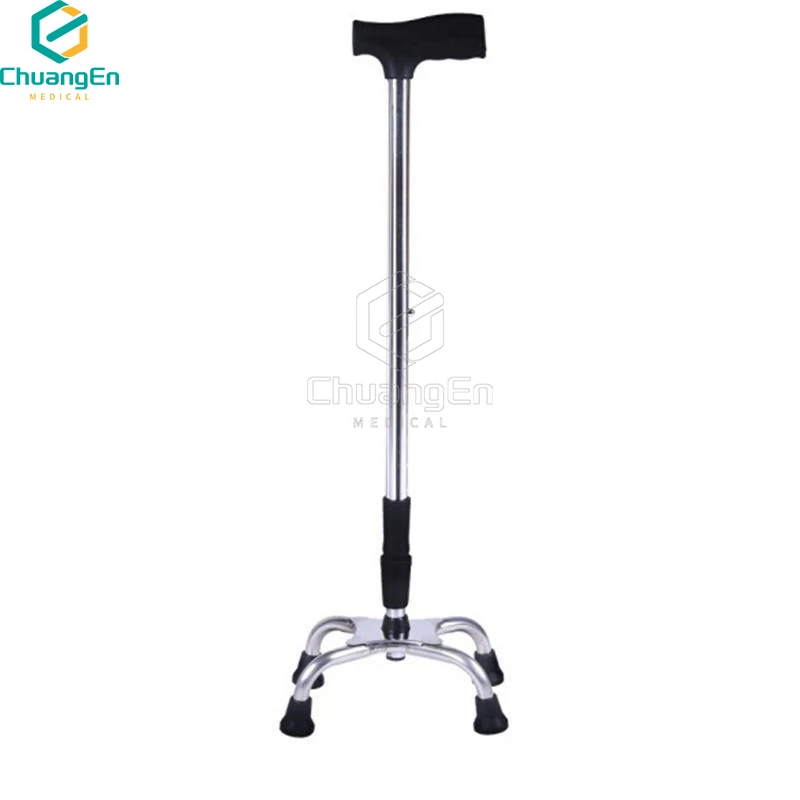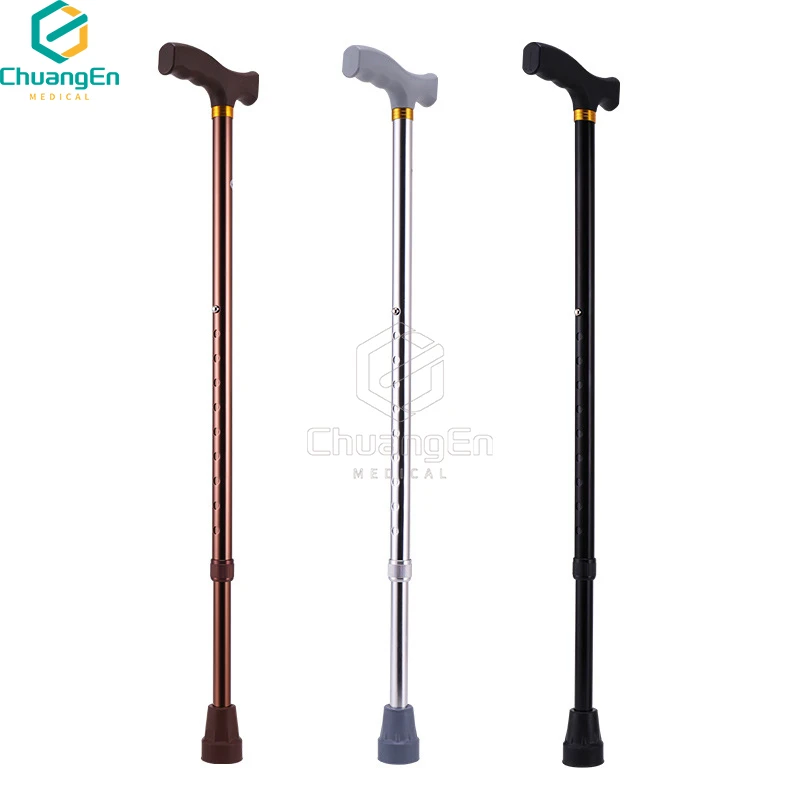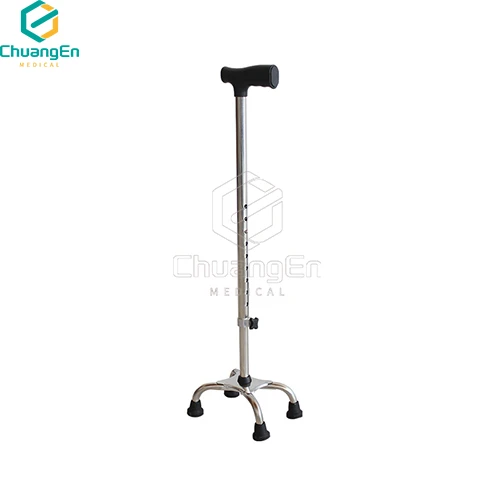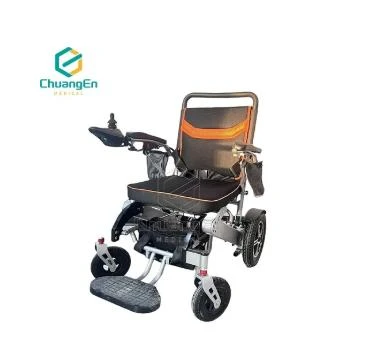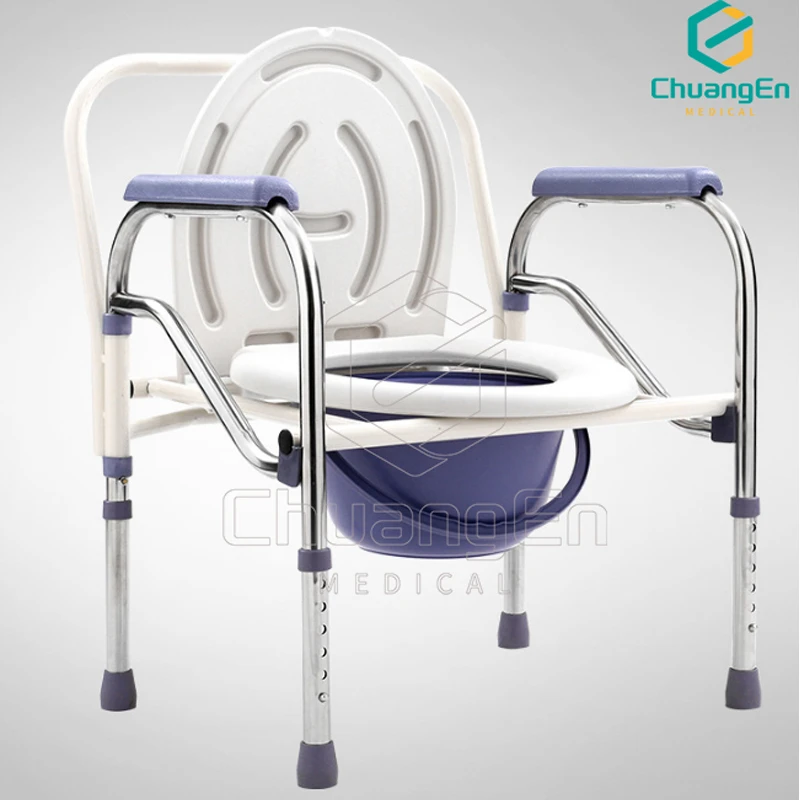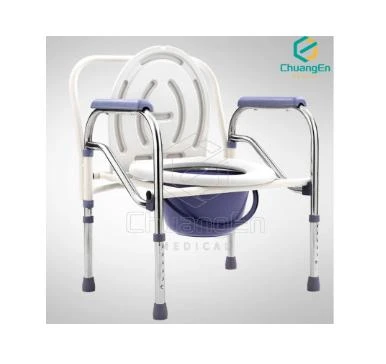Navigating Modern Mobility: Trends and Technological Advancements in Power Wheelchairs
The global landscape of personal mobility solutions is undergoing a significant transformation, driven by an aging population, increasing prevalence of chronic conditions, and a strong demand for enhanced independence and quality of life. At the forefront of this evolution is the electric wheelchair, a sophisticated device that has moved far beyond simple motorization to become a pivotal tool in modern healthcare and assistive technology. These devices, often referred to as electric power wheelchairs or power electric wheelchairs, are no longer just about basic movement; they incorporate advanced robotics, intuitive control systems, and lightweight, durable materials to offer unparalleled freedom and safety. Current industry trends highlight a shift towards more compact, portable designs, extended battery life, and integration with smart home technologies, reflecting a user-centric approach to product development. The focus is increasingly on electric folding wheelchair models that combine robust performance with ease of transport, catering to a dynamic lifestyle. Furthermore, advancements in motor technology and battery chemistry are significantly impacting the range and reliability of these essential mobility aids. This comprehensive overview delves into the intricate details of electric wheelchairs, exploring their technical parameters, manufacturing precision, diverse applications, and the strategic advantages they offer to users and healthcare providers alike. Understanding these nuances is crucial for B2B decision-makers seeking to procure or integrate cutting-edge mobility solutions.
The demand for sophisticated mobility solutions continues to surge, propelling innovation in the design and engineering of powered electric wheelchairs. These devices are meticulously engineered to provide not only basic locomotion but also advanced features that enhance user experience, safety, and durability in various environments. A critical aspect of their design revolves around the careful selection of components, from high-torque electric motors to advanced battery management systems, all contributing to superior performance and reliability. The integration of ergonomic design principles ensures maximum user comfort during prolonged use, while robust safety features, such as electromagnetic braking systems and anti-tip wheels, provide peace of mind. Moreover, the evolution of materials science has enabled the development of motorized lightweight electric wheelchairs that are both strong and easily transportable, addressing a key need for users who travel frequently or have limited storage space. As the market expands, manufacturers are increasingly focusing on customization options, allowing devices to be tailored to specific user requirements, whether it's specialized seating, unique control interfaces, or enhanced suspension for varied terrains. This adaptability underscores the commitment of the industry to providing inclusive and effective mobility solutions that truly empower individuals. The economic power electric wheelchair segment, in particular, is witnessing significant growth, offering a balance of performance and affordability that makes advanced mobility accessible to a broader demographic.
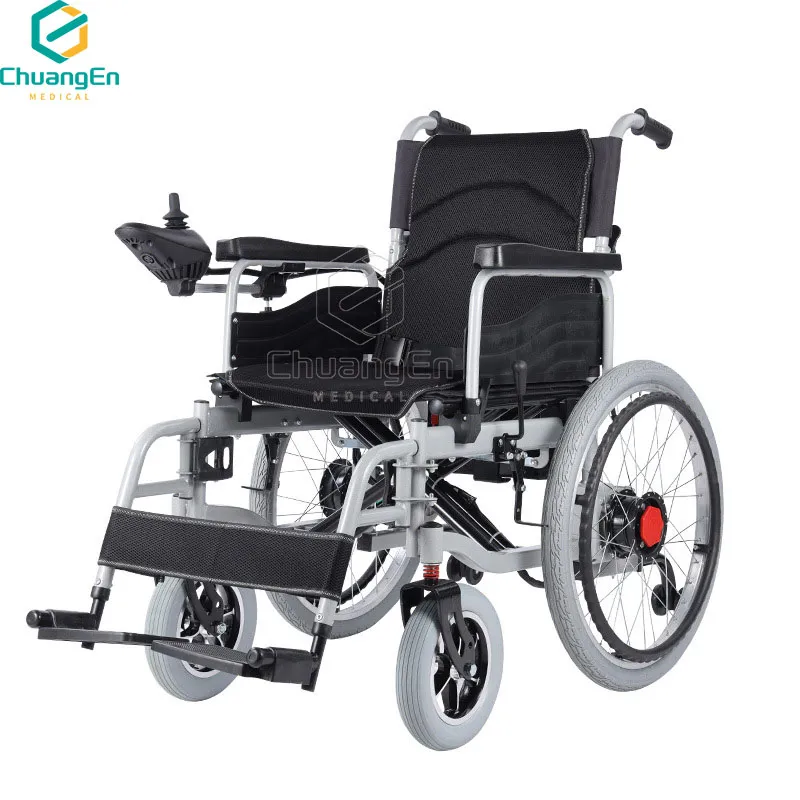
Unpacking Technical Specifications: A Deep Dive into Electric Wheelchair Parameters
Understanding the core technical specifications is paramount when evaluating an electric wheelchair for procurement or integration into a healthcare service portfolio. These parameters directly influence performance, user comfort, safety, and suitability for specific applications. Key specifications typically include maximum speed, range per charge, motor type and power, battery capacity and chemistry, weight capacity, and overall dimensions. For instance, a higher maximum speed (e.g., 6 km/h) allows for quicker movement in open spaces, while a substantial range (e.g., 20-30 km) ensures extended use without frequent recharges, which is particularly beneficial for users who require an electric power wheelchair for daily activities outside the home. Motor power, often expressed in watts, dictates the ability of the electric wheelchair to navigate inclines and varied terrains effectively. Battery technology has advanced significantly, with lithium-ion batteries becoming prevalent due to their higher energy density, longer cycle life, and faster charging capabilities compared to traditional lead-acid batteries. The weight capacity is a critical safety parameter, ensuring the device can safely support the user, while compact folded dimensions are crucial for portable electric power wheelchair models, facilitating transport and storage. Turning radius is also a vital consideration, especially for indoor maneuverability in confined spaces.
Typical Electric Wheelchair Performance Parameters
| Parameter | Typical Range/Value | Significance |
|---|---|---|
| Max Speed | 6-8 km/h | Governs travel time and suitability for different environments. |
| Driving Range | 15-30 km per charge | Determines distance before recharging, crucial for daily use. |
| Motor Power | 200W - 250W (per motor) | Impacts climbing ability and overall power delivery. |
| Battery Type | Lithium-ion (LiFePO4 preferred) | Energy density, lifespan, and charging characteristics. |
| Battery Capacity | 12-20 Ah (24V) | Directly correlates with driving range. |
| Weight Capacity | 120-150 kg (265-330 lbs) | Maximum safe user weight. |
| Wheel Type | Solid or Pneumatic | Affects ride comfort, maintenance, and traction. |
| Overall Weight | 20-40 kg (folding models) | Influences portability and ease of transport. |
Considering the CLD-02 Manufacturers Wholesale Economic Power Electric Wheelchair For The Adults (22 Inch), its specifications are optimized for adult users seeking a balance of economy and robust performance. This particular model, a powered electric wheelchair, is designed with a 22-inch seat width to accommodate a wide range of adult users comfortably. The "economic" designation does not compromise essential functionalities but rather indicates a design focused on delivering core value without unnecessary complexities, making it an attractive option for large-scale procurement by healthcare facilities or distributors. For example, while specific motor power and battery capacity might vary slightly between production batches, a typical CLD-02 would feature high-efficiency brushless DC motors providing reliable propulsion and a long-lasting lithium-ion battery, often around 15-20 Ah (24V), delivering a substantial driving range. Its robust frame, likely constructed from aerospace-grade aluminum alloy, ensures durability while maintaining a manageable overall weight for portability. The emphasis on user comfort is evident in the 22-inch seat, which is wider than many standard models, reducing pressure points and enhancing the overall experience for a diverse user base.
CLD-02 Specific Parameters (Example)
| Parameter | CLD-02 (22 Inch) |
|---|---|
| Product Name | Manufacturers Wholesale Economic Power Electric Wheelchair For The Adults (22 Inch) |
| Motor Type | Brushless DC Motors (typically 2 x 250W) |
| Battery | 24V 15-20Ah Lithium-ion |
| Max Range | Up to 25 km (15.5 miles) |
| Max Speed | 6 km/h (3.7 mph) |
| Weight Capacity | 135 kg (297 lbs) |
| Net Weight (without battery) | Approx. 28 kg (61.7 lbs) |
| Folded Dimensions (LWH) | Approx. 85 x 62 x 35 cm |
| Seat Width | 22 inches (approx. 56 cm) |
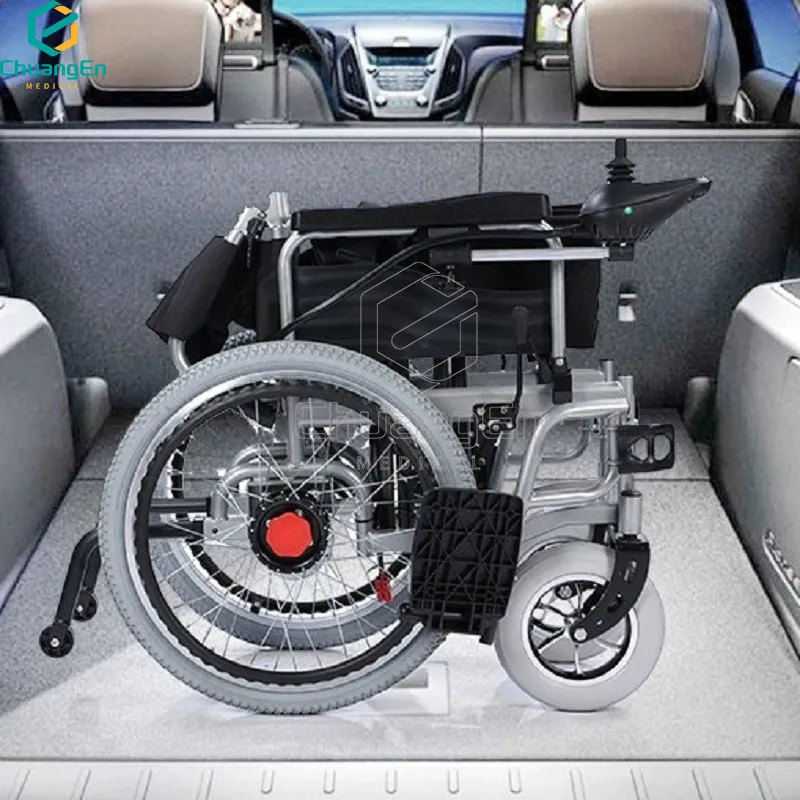
Precision Engineering: The Manufacturing Process of Advanced Electric Wheelchairs
The production of a high-quality electric wheelchair, particularly a motorized electric wheelchair, is a complex process demanding meticulous precision, robust material selection, and adherence to stringent quality control standards. It begins with the selection of premium raw materials. For the frame, aerospace-grade aluminum alloys (e.g., 6061-T6 or 7075-T6) are often chosen for their exceptional strength-to-weight ratio and corrosion resistance, ensuring the device is both durable and manageable. For certain structural components, high-strength steel or even carbon fiber composites might be utilized to optimize structural integrity and reduce overall weight. The manufacturing process typically involves several key stages: precision tube bending and forming, where automated CNC machinery shapes the frame components to exact specifications; robotic welding, which ensures consistent and strong joints, crucial for safety and longevity; and sophisticated CNC machining for critical components such as motor housings, gearboxes, and wheel hubs, guaranteeing precise fit and smooth operation. Surface treatments like powder coating or anodizing are applied to enhance durability, protect against corrosion, and improve aesthetic appeal, extending the product's lifespan even in challenging environments.
Beyond material processing, the assembly phase of an electric wheelchair involves the integration of complex electrical and electronic systems. This includes the installation of high-efficiency electric motor wheelchair drives, advanced controllers that translate joystick commands into precise movements, and robust battery management systems (BMS) that monitor and optimize battery performance and safety. Each electrical connection is meticulously checked for integrity to prevent failures. Rigorous testing protocols are integrated at every stage of production. This includes material strength testing, component dimensional inspection, electrical continuity tests, functional tests of motors and brakes, and comprehensive performance validation on various terrains, simulating real-world usage. Manufacturers often adhere to international quality and safety standards such as ISO 13485 (Quality Management Systems for Medical Devices), CE marking (European conformity), and FDA regulations (for sales in the United States). These certifications are not merely regulatory requirements but benchmarks of product reliability and user safety. The expected lifespan of a well-maintained electric power wheelchair typically ranges from 5 to 10 years, depending on usage frequency and maintenance practices, with key components like batteries and tires requiring periodic replacement.
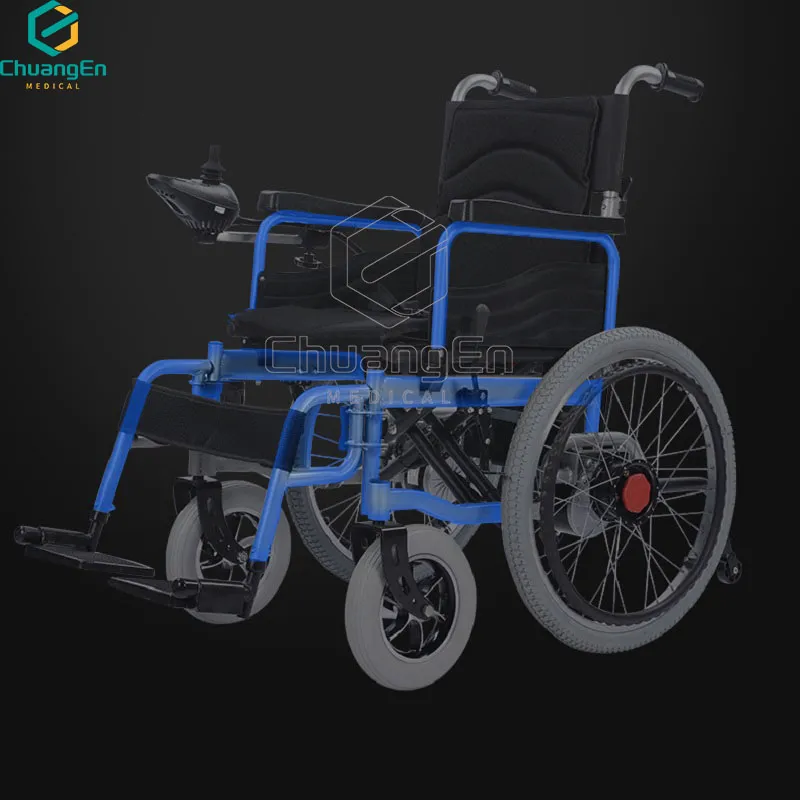
Key Advantages and Diverse Application Scenarios of Modern Electric Wheelchairs
Modern electric wheelchairs, especially advanced models like the CLD-02, offer a multitude of technical advantages that significantly enhance user independence and quality of life across diverse application scenarios. One primary advantage is enhanced maneuverability, facilitated by precise joystick controls and often compact turning radii, allowing users to navigate tight indoor spaces like homes, hospitals, and offices with ease. The integration of powerful electric motors ensures seamless propulsion over varying terrains, including ramps, uneven pavements, and carpeted floors, which can be challenging for a manual wheelchair with electric motor conversion kits. Energy efficiency is another crucial benefit; advanced battery systems and efficient motor designs provide extended ranges on a single charge, reducing the need for frequent recharging and enabling longer outings. Durability and robustness are paramount, with frames built from high-strength alloys and components designed to withstand daily wear and tear, contributing to a longer service life and reduced maintenance costs. Furthermore, many models, including electric folding wheelchair variants, offer exceptional portability, collapsing into a compact form factor for easy transport in vehicles, making them ideal for travel and active lifestyles.
The application scenarios for a high-performance electric powered wheelchair are extensive and varied. In healthcare facilities, they are indispensable for patients with limited mobility, enabling them to move independently within the hospital environment, reducing reliance on nursing staff. For home care, a portable electric power wheelchair empowers individuals to perform daily tasks, access different areas of their home, and engage with their communities, fostering greater self-reliance. Rehabilitation centers utilize these devices to assist patients in regaining mobility and adapting to new physical conditions, with adjustable features often supporting therapeutic exercises. In the context of elderly care, an electric motor wheelchair offers a safe and convenient means of mobility for seniors, allowing them to maintain social connections, participate in activities, and move around without excessive physical exertion. Beyond individual use, these economic power electric wheelchair models are also highly suitable for B2B procurement by rental services, airports, and public institutions requiring reliable, easy-to-operate mobility solutions for their clientele. The CLD-02, with its 22-inch seating, provides enhanced comfort for a broader range of adults, making it particularly valuable in situations where prolonged use is expected, or where users require additional space and support.
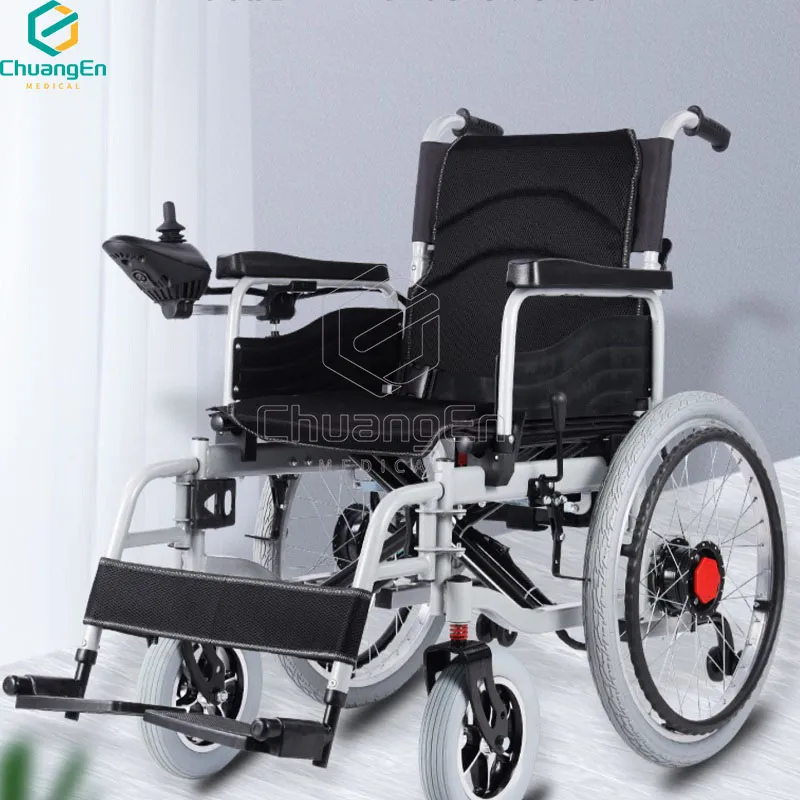
Strategic Comparison: CLD-02 vs. Competitors and Customization Potential
When evaluating procurement options for a fleet of electric wheelchair units, a strategic comparison between available models is essential to identify the best fit for specific organizational needs and budget constraints. The CLD-02 Manufacturers Wholesale Economic Power Electric Wheelchair For The Adults (22 Inch) stands out in the market by offering a compelling balance of cost-effectiveness, robust functionality, and enhanced user comfort, particularly due to its wider 22-inch seat. Compared to high-end, premium models, the CLD-02 avoids overly complex, often unnecessary features that drive up costs, focusing instead on core reliability, safety, and mobility. While a premium motorized electric wheelchair might boast features like advanced suspension systems for extreme off-road use or highly customizable seating modules for complex postural support, the CLD-02 excels in providing dependable daily mobility within typical indoor and outdoor environments. In contrast to more basic or manual wheelchair with electric motor add-ons, the CLD-02 offers an integrated design, superior power delivery, and typically a longer lifespan for its components, ensuring better long-term value and reduced maintenance. Its "economic" positioning makes it highly attractive for bulk purchasing by institutions such as hospitals, nursing homes, or government agencies that require durable, user-friendly, and cost-efficient solutions.
CLD-02 vs. Typical Competitors Comparison
| Feature/Model | CLD-02 (Economic Power) | High-End Performance Electric Wheelchair | Basic Manual + Motor Kit |
|---|---|---|---|
| Price Point | Mid-Range (Excellent Value) | High to Premium | Low (Initial Cost) |
| Target User | Adults needing reliable, comfortable daily mobility | Users with complex needs, rugged terrain use | Budget-conscious users, occasional power assist |
| Build Quality | Durable Aluminum Alloy, Robotic Welding | Aerospace Composites, Advanced Suspension | Standard Steel/Aluminum, Add-on Motor |
| Portability | Excellent (Folding Design) | Variable (Often heavier, less portable) | Good (Manual chair folds, motor detaches) |
| Battery Life/Range | Robust (Up to 25 km) | Very Long (30+ km) | Moderate (10-15 km) |
| Comfort (Seat Width) | Superior (22 Inch standard) | Customizable, often narrower standard | Standard manual chair width |
| Maintenance | Low to Moderate | Moderate to High (Complex systems) | Variable (Two separate systems) |
While the CLD-02 is designed to meet broad demand for an economical yet robust electric wheelchair, customization possibilities remain a crucial consideration for B2B partners. Manufacturers often offer options for joystick placement (left/right hand), various cushion types for enhanced pressure relief, and additional accessories such as cup holders, safety belts, or storage bags. For large-scale orders, a manufacturer can often accommodate specific requirements such as branding, unique color schemes, or minor structural modifications to suit particular institutional needs. An example application case could involve a rehabilitation hospital that requires a fleet of motorized lightweight electric wheelchairs for patient recovery. The CLD-02's combination of easy portability, reliable performance, and comfortable 22-inch seating makes it an ideal candidate. The hospital benefits from its robust construction, low maintenance profile, and the availability of essential safety features, ensuring patient comfort and staff efficiency. The cost-effectiveness of an economic power electric wheelchair like the CLD-02 allows the hospital to equip more patients with vital mobility support within their allocated budget, significantly improving patient independence and throughput.
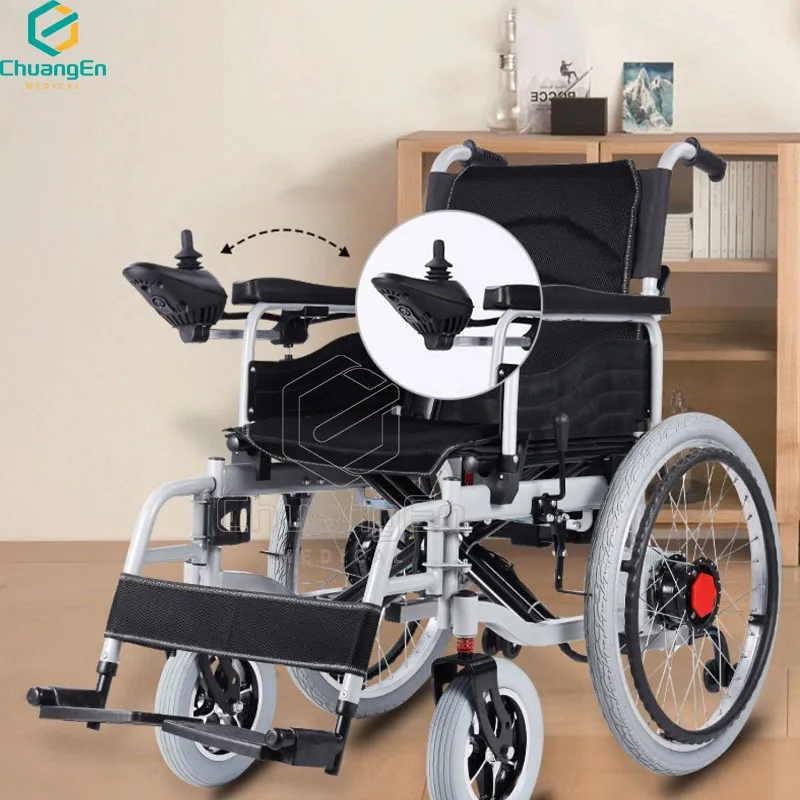
Ensuring Trust and Reliability: Certifications, Support, and FAQs
For B2B entities, the procurement of medical devices like an electric wheelchair necessitates a high degree of trust and assurance in the product's quality, safety, and reliability. This confidence is built upon adherence to international standards, transparent operational practices, and comprehensive customer support. Manufacturers committed to excellence will possess certifications such as ISO 13485, which specifies requirements for a quality management system for organizations involved in the medical device lifecycle. This ensures that every stage, from design and development to production and servicing, meets stringent quality benchmarks. Furthermore, compliance with regulatory bodies like the FDA (U.S. Food and Drug Administration) for market entry in the United States, and CE Marking for the European Economic Area, signifies that the motorized electric wheelchair adheres to critical health, safety, and environmental protection standards. Established manufacturers with extensive industry experience and long service years, often partnering with reputable component suppliers, inherently demonstrate a higher level of authority and trustworthiness. Regular third-party audits and stringent internal quality control procedures, including component testing and final product verification, further reinforce this commitment to delivering a reliable electric power wheelchair.
Frequently Asked Questions (FAQs)
Q1: What is the typical delivery cycle for a bulk order of electric power wheelchair units?
A1: Delivery cycles can vary based on order volume, customization requirements, and current production schedules. For standard models like the CLD-02, a typical lead time for bulk orders (e.g., 50-100 units) usually ranges from 4 to 8 weeks after order confirmation and deposit. Expedited shipping options may be available for urgent requirements, though this may incur additional costs. We recommend discussing specific timelines with our sales team during the quotation process.
Q2: What kind of warranty and after-sales support is provided for the CLD-02 electric wheelchair?
A2: The CLD-02 typically comes with a standard manufacturer's warranty covering key components. For instance, the frame often has a 3-5 year warranty, while the motor and controller might have a 1-year warranty, and the battery generally has a 6-month to 1-year warranty depending on chemistry. Specific warranty terms will be detailed in the purchase agreement. Our customer support team provides comprehensive technical assistance, troubleshooting guidance, and facilitates spare parts procurement to ensure product longevity and user satisfaction.
Q3: Can the CLD-02 electric folding wheelchair be transported on airplanes?
A3: The portability of the CLD-02, as an electric folding wheelchair, makes it suitable for air travel. However, regulations for transporting electric wheelchairs vary significantly by airline and country, especially concerning battery type and capacity. Lithium-ion batteries often require specific handling and may need to be removed and carried in the cabin, with capacity limits (e.g., typically under 300 Wh). It is crucial for users or institutions to contact their specific airline well in advance of travel to understand and comply with their exact policies for motorized electric wheelchairs.
Commitment to delivering a high-quality electric wheelchair extends beyond manufacturing to robust customer support. This includes providing detailed user manuals, technical guides for maintenance, and readily available spare parts. Prompt and effective customer service, whether for troubleshooting or warranty claims, is critical for minimizing downtime and ensuring continuous user satisfaction. The provision of clear delivery schedules and transparent shipping information, especially for international wholesale orders of electric power wheelchair prices, further solidifies trust. Furthermore, many reputable manufacturers offer training programs for healthcare providers or technicians on the proper operation, maintenance, and basic repair of their electric motor wheelchair models, ensuring that the products are used optimally and maintained effectively throughout their lifespan. This holistic approach to product reliability and customer care underscores a manufacturer's dedication to quality and partnership.
References
- World Health Organization. (2023). Assistive Technology.
- International Organization for Standardization. (ISO 13485:2016). Medical devices — Quality management systems — Requirements for regulatory purposes.
- United States Food and Drug Administration. (FDA). Medical Devices Regulations.
- Rehabilitation Engineering and Assistive Technology Society of North America. (RESNA). Position Papers and Standards.

